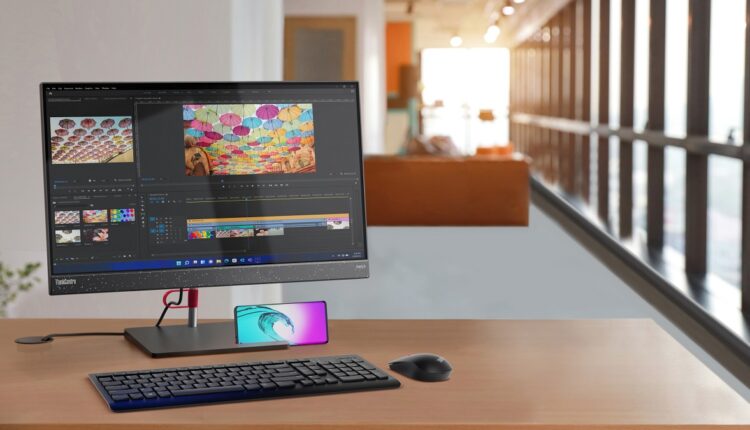Lenovo seeks to make its products more sustainable
PC and smartphone maker Lenovo continues to work on more environmentally friendly and sustainable products from manufacturing to packaging
Lenovo has reached a milestone in its effort to advance the circular economy and move toward its goal of achieving net-zero greenhouse gas emissions by 2050.
From January 2019 to December 2021 Lenovo used more than 18,750 tons of recycled plastic in the manufacture of its ThinkVision monitors, which has led it to exceed the figure of 61.5 million monitors with recycled materials offered for sale in everyone.
At the beginning of 2023 it was the first manufacturer of PCs and smartphones, as well as one of the first 139 companies in the world, with a goal of net-zero emissions validated by the Science Based Targets initiative (SBTi) and continues to work towards that in its new product lines, such as the ThinkCentre neo family of monitors, have the lowest possible carbon footprint.
“As a global technology leader, Lenovo has been committed to reducing its emissions for more than a decade,” said Yuanqing Yang, Lenovo’s president, who pledged to continue advancing in this regard. To achieve this, Lenovo focuses on making the entire life cycle of its devices more sustainable, from manufacturing or packaging to distribution and recycling.
Along this path, it also has partners such as Microsoft, which has announced significant improvements at the sustainability level in Windows 11 Pro, with tools that help move towards new hybrid work models, reducing the impact on the carbon footprint. Hardware and software go hand in hand to make meetings more efficient, with tools such as Microsoft Teams, or carrying out changes in the default power settings for sleep mode and screen off, among other new features.

Lenovo’s most efficient monitors
The new line of monitors is an example of Lenovo’s efforts in this regard. A total of 21 of the company’s monitors have the ENERGY STAR Most Efficient certification, which highlights those products that represent the best innovations of the year in terms of energy savings and environmental protection.
These devices have, among other technologies, an integrated intelligent engine that dynamically detects the power consumption of compatible USB devices and intuitively allocates power between the different connections of the monitor based on the use made of them, achieving savings of up to 7 % energy thanks to this process.
They also incorporate two types of sensors: one for ambient light, which reduces the brightness of the screen depending on the light in the environment, and another for motion detection, which allows the screen to be turned on or off automatically depending on whether the user is present or not, achieving between them a saving of 64 % of energy consumption.
Microsoft has also made progress in its efforts to achieve more efficient PC performance. In this sense, when the devices are plugged in, turned on, connected to the Internet and regional carbon intensity data is available, Windows Update schedules installations at specific times of the day, moving excess energy consumption to the moment in which energy production proceeds from a higher proportion of renewable sources.
Less volatile organic compounds in the paint
Another aspect that Lenovo pays attention to is painting. The company’s efforts to use less volatile organic compounds (VOCs) in ThinkVision monitors have saved 600 million cubic meters of clean air per year and reduced 120 kilograms of VOCs/year.
The paint can be harmful and polluting due to these gases, which contain chemical substances. A 27-inch monitor contains about 64 mg of VOCs if it is made of paint. Therefore, most ThinkVision monitors are now manufactured without added paint, effectively reducing the emission of these gases into the atmosphere.
“Sustainability is not necessarily a finish line, but rather a continuous process of improvement. Therefore, the company seeks to reduce the environmental impact of packaging and logistics through continuous optimization of design, choice of materials, processing and the life cycle,” they explain from the company. The design of removable and flexible packaging, for example, makes transport more efficient: “Less weight means less CO2 emissions in the transport process.”
Like Lenovo, Microsoft has taken this effort to save energy to all its products and services, incorporating other tools, such as the ‘Sustainability Calculator’, which allows its customers to know carbon emissions with complete transparency resulting from the storage and management of data in the cloud.
Source: dpa
(Reference image source: Lenovo, Europa Press / dpa)
Visit our news channel on Google News and follow us to get accurate, interesting information and stay up to date with everything. You can also see our daily content on Twitter and Instagram


